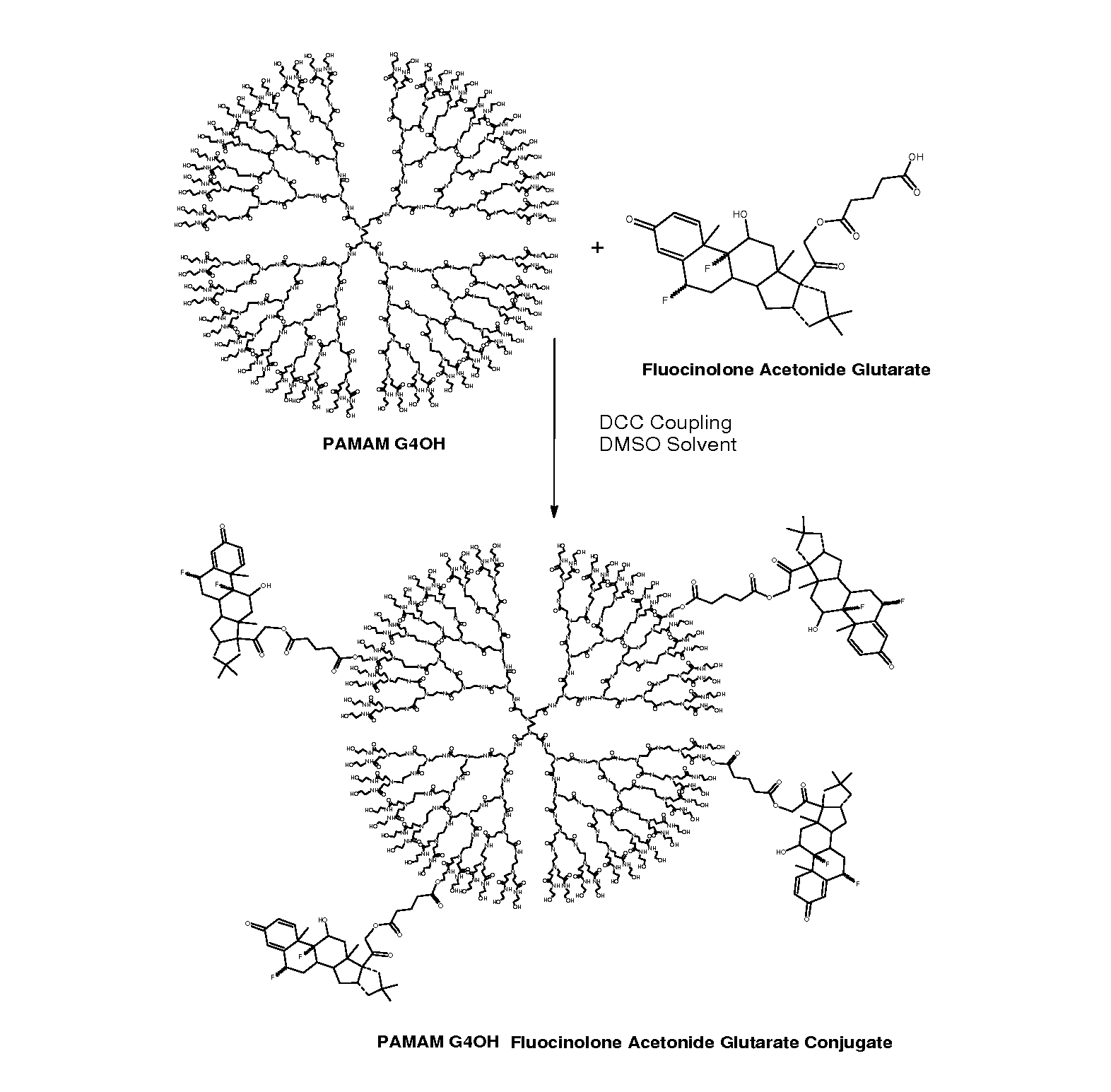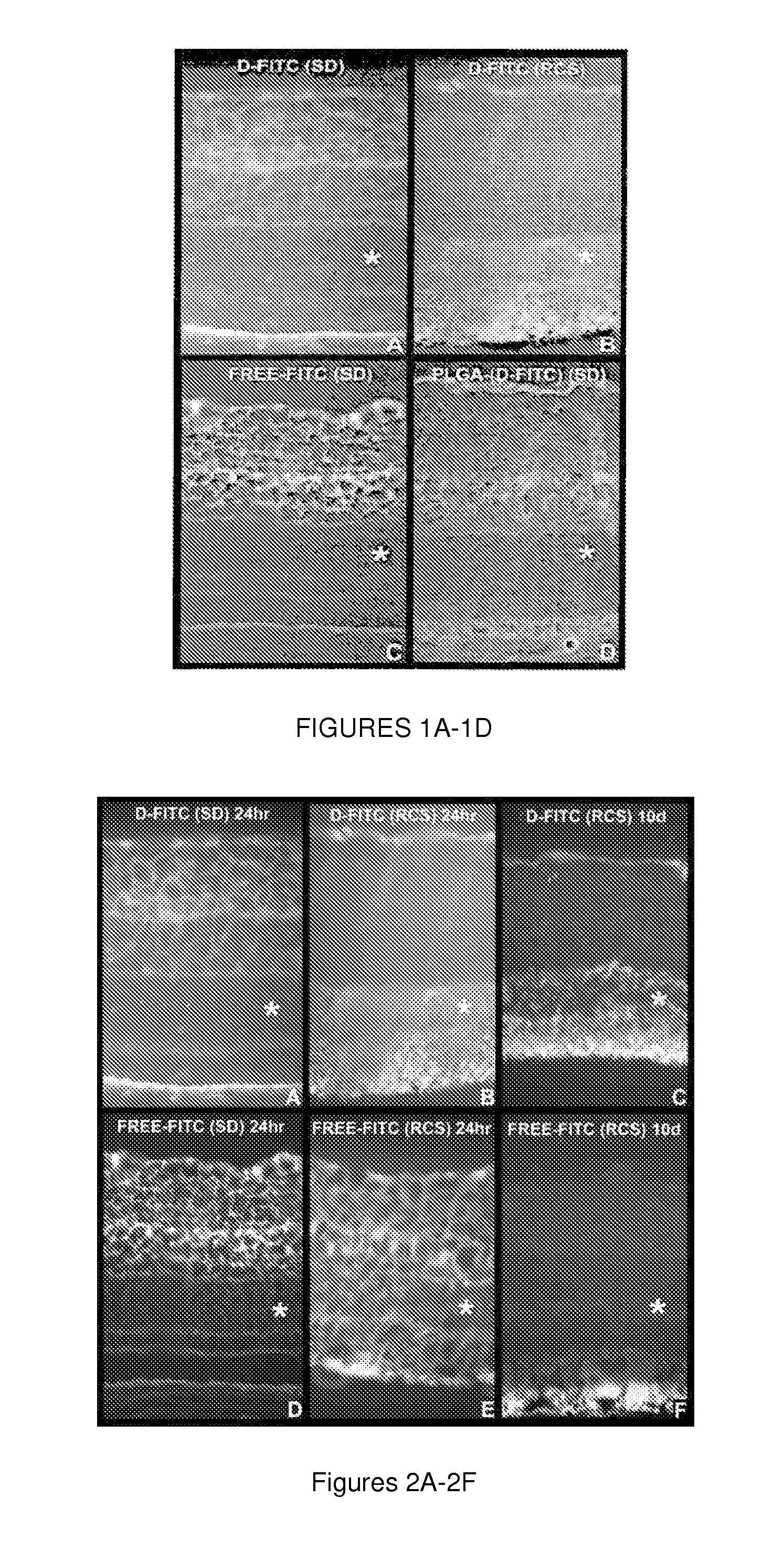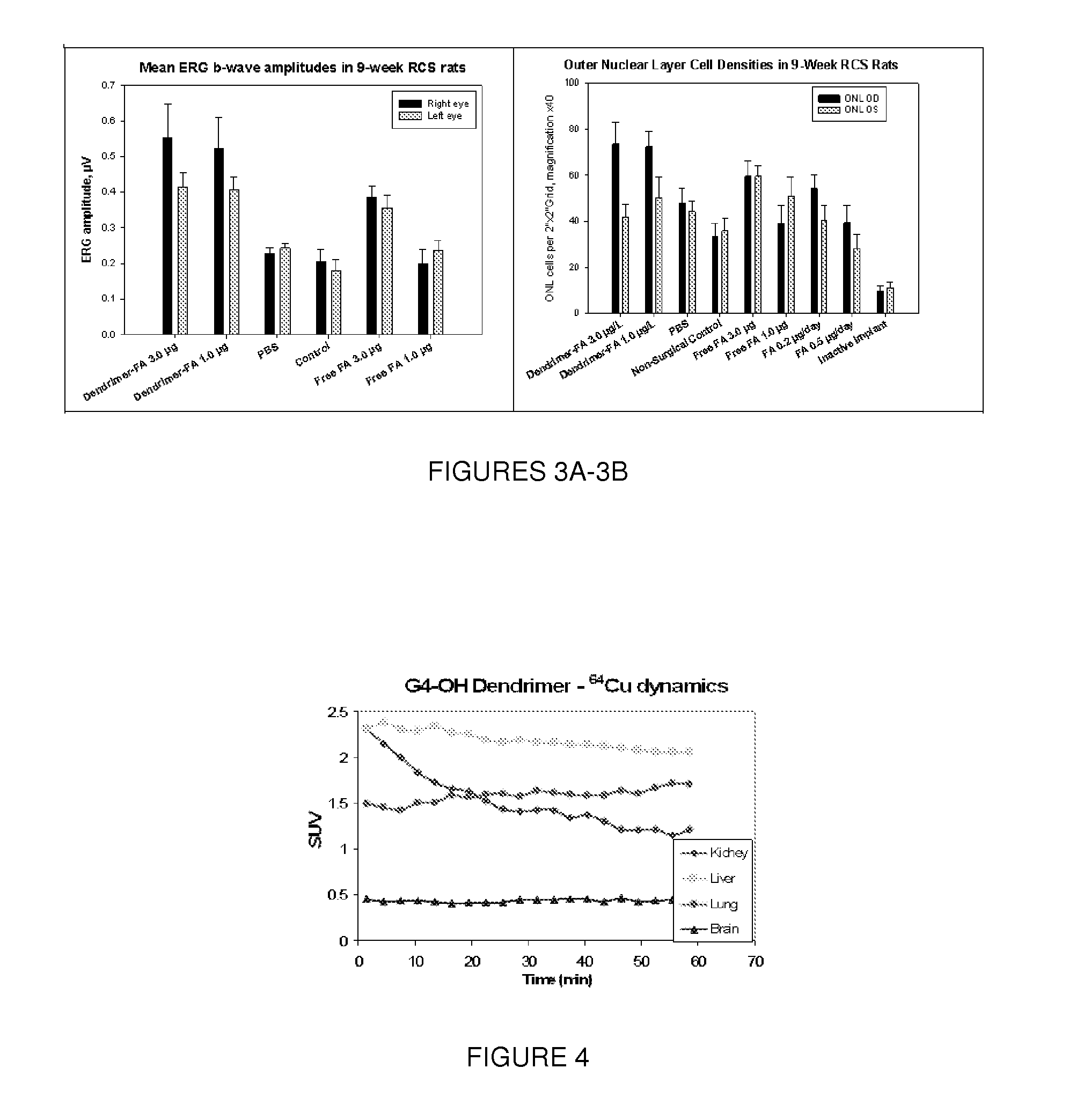Dendrimers for sustained release of compounds
a compound and dendrimer technology, applied in the field of dendrimer-based compositions, can solve the problems of many problems leading to vision loss, vision loss in people over 65, and many problems such as vision loss
- Summary
- Abstract
- Description
- Claims
- Application Information
AI Technical Summary
Benefits of technology
Problems solved by technology
Method used
Image
Examples
example 1
Dendrimer Uptake by Microglial Cells In Vitro and In Vivo
[0124]The role of surface charge of dendrimers on the intracellular transport and drug release from dendrimers has been reported (Kannan, S. et al., J. Biomaterials Science: Polymers Edition. 2004; 15:311; Khandare, J. et al., Bioconjugate Chem. 2005; 60:330-337), but not previously reported in relation to microglial cells, a target of the present therapeutic efforts.
[0125]To study the effect of dendrimer surface group on microglial cell uptake, microglial cells (5×105 cells / ml) were treated with or without (Ctrl) 10 μg of FITC-labeled PAMAM-G4 dendrimers with different functional groups (—OH, —NH2 and —COOH) at 37° C. for 1 hour. The uptake of the dendrimers was estimated using a Beckton Dickinson flowcytometer. A significant increase in the fluorescence intensities with the control cells indicated that all three of the dendrimers entered the cells rapidly, with PANAN-G4-OH dendrimers showing a higher uptake than the other tw...
example 2
PAMAM-G4-OH-Fluocinolone Acetonide (D-FA) Conjugates (Nanodevices) Compared to Sustained Release Implants
[0130]Preparation and characterization of D-FA conjugates (nanodevice) were performed as follows. PAMAM-G4-OH dendrimers were chosen for nanodevice preparation. Jayanth Khandare, P. K. et al (2005); P. Kolhe, J. K. et al., Biomaterials 27:660-669 (2006). The dendrimers were obtained from Aldrich and were dialyzed to remove any small lower generation impurities that may be present. PAMAM-G4-OH (Mol. Wt=14,217 Da, 64-OH end groups, size ˜5 nm) was conjugated using a 2-step dicyclohexyl carbodiimide (DCC) coupling reaction (FIG. 6). The reaction mixture was stirred for three days and filtered to remove DCU.
[0131]The filtrate was dialysed against DMSO for three days by replacing DMSO after each day (dialysis membrane cutoff 1000 Da) to remove unreacted compounds. The dialyzed product was dried under vacuum to obtain conjugate. 1H-NMR was used to characterize the conjugate. The conjug...
example 3
Fluocinolone Acetonide was Neuroprotective in RCS Rats
[0135]According to this Example, the steroid fluocinolone acetonide (FA) was highly neuroprotective in slowing the retinal degeneration of RCS rats when delivered via sustained-release intravitreal drug delivery implants (IDDIs). FIG. 9B shows outer nuclear layer cell (photoreceptor cell body) densities among four-groups of nine-week RCS rats that received either FA 0.2 μg / day, FA 0.5 μg / day, inactive drug-delivery implants (in right eyes) and non-surgical controls during the four-week study period. Quantitative histological analysis showed that the ONL cell densities in FA 0.2 μg / day-treated eyes were 2.38±0.12 times greater than in the non-surgical controls (p<0.001) and 4.85±0.24 times higher than in the inactive IDDI group (p<0.001). In the FA 0.5 μg / day-treated eyes, ONL counts were 1.78±0.21 times greater than the non-surgical control eyes (p-value with Kruskal-Wallis test=0.02) and 3.56±0.17 times higher than eyes that rec...
PUM
| Property | Measurement | Unit |
|---|---|---|
| Diameter | aaaaa | aaaaa |
| Diameter | aaaaa | aaaaa |
| Time | aaaaa | aaaaa |
Abstract
Description
Claims
Application Information
 Login to View More
Login to View More - R&D
- Intellectual Property
- Life Sciences
- Materials
- Tech Scout
- Unparalleled Data Quality
- Higher Quality Content
- 60% Fewer Hallucinations
Browse by: Latest US Patents, China's latest patents, Technical Efficacy Thesaurus, Application Domain, Technology Topic, Popular Technical Reports.
© 2025 PatSnap. All rights reserved.Legal|Privacy policy|Modern Slavery Act Transparency Statement|Sitemap|About US| Contact US: help@patsnap.com



